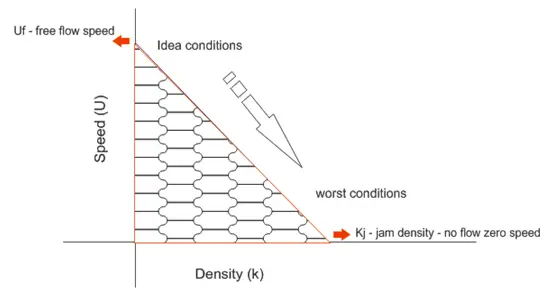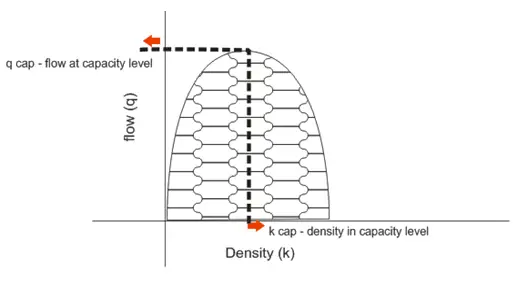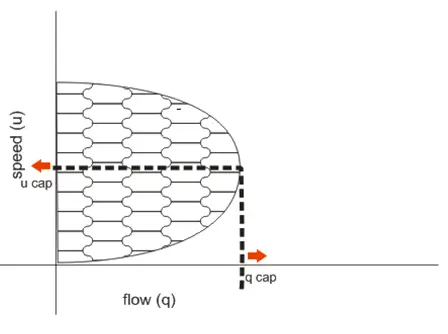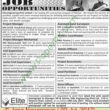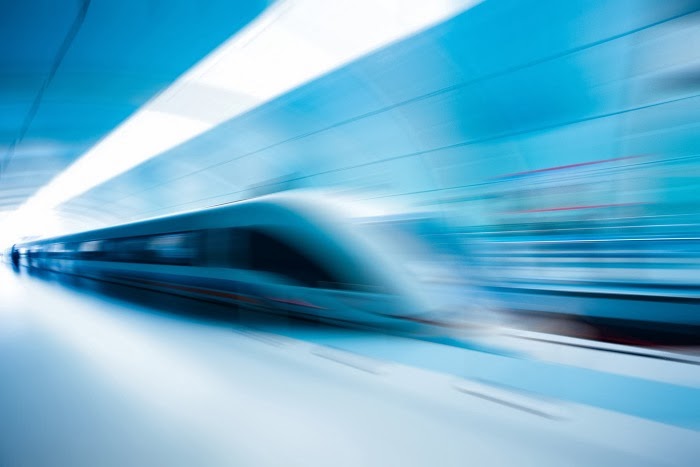 |
| Speed and its role in traffic engineering |
U = s/t
In transportation engineering – speed is defined as the distance(s) that is covered by a vehicle in specific time (t). Speed is the most critical aspect of the geometric design – the roads are designed according to the speed and the cost of any highway project is dependent on the speed. The greater the speed you are providing for the riders the greater will be the cost of that project.
Important Information
The speed limit on the motarway in South Asia is usually in 120 kmph – kilo meters per hour
Speed is not consistent. The speed of any vehicle depends on many factors like the location of the vehicle, the design of the roadway, the purpose for which the person is driving the vehicle, the time in which the person is riding, the congestion condition in that locality, the weather condition and the visibility on the road etc. Because all these factors are varying and are very complex to tackle, the speed is always changing even in very small amount of time.
Types of Speed
1) Running Speed
Important Information
The distance between Rawalpindi and Lahore if we go from Motarway is 400 km, but if we go from G.T Road it is approx. 300 km. But more time is needed in case of G.T. Road.
2) Journey Speed or Travelling Speed
Speed is very important aspect as far as the supply chain management is concerned, like if you have to supply a particular fresh fruit which will expire after certain hours you have to consider all the critical aspects which effects the speed, similarly in traffic engineering all the speeds are considered and studied.
3) Instantaneous – Time mean or spot speed
Important Information
What is the meaning of percentile? Percentile basically compares a result with certain group of people or objects rather than comparing with absolute value. For example in statics class if your score is like only 6 % students have got better marks than you and 94% students have marks less than you, then your result is 94 percentile.
How to calculate the percentile speed?
85th percentile here would mean that only 15 cars out of 100 cars have speed better then the specific speed, and 85 cars out of 100 cars have speed less than that specific speed.
In 85 percentile you have to note such a speed such that only 15 % cars have speed more than this and 85% cars have speed less than this specific speed. Thus this specific speed is taken or considered as the operating speed of the roadway.
4) Space Mean Speed
5) Design speed
Important InformationStandard lane width in case of Motorway and most highways is 3.65 m except the local access roads in the rural areas or the dual carriage way in case of the rural areas.
Factors Influencing the Speeds
(a) Macroscopic characteristics of traffic
(b) Microscopic characteristics of traffic
Macroscopic Characteristics of Traffic
1) Speed – U
2) Volume or flow – q
3) Density or concentration – K
Speed, we have already discussed it, what is volume, it is not the multiplication of length width and depth,
Volume or flow: no. of vehicles passing through specific section of the highway at the specific time.
Flow – if time is in hours then flow is no. of vehicles per hour. Thus its unit is veh. / hr
q = veh / hr
Density: no. of vehicles occupying specific length of a highway at specific time is known as density.
The basic difference between volume and density is that volume is in terms of time (hours) while density is in terms of length of the highway section (miles)
K = veh. / mile
Units:
– Volume (q) = veh. / hr.
– Density (k) = veh. / mile
Macroscopic Characteristics of Traffic
(a) Spacing (s) and headway (h)
(b) Clearance (c) and gap (g)
(a) Spacing (s)
S=ft/vehicles
1/S = vehicle / ft
K = vehicles / mile = 5280 / s
K = 5280 / s
Where k is concentration or density – veh. / mile
And s is spacing which is in ft/ veh.
Important Information
1 mile = 5280 ft.
(a) Headway (h)
Important Information
In formula f1 racing cars the score of all the vehicles is calculated by headway the time It is behind or a head of any other vehicle.
h = sec / veh.
1/h = veh. / sec.
q=veh./hour
= 3600 / h
Now;
Speed (U) – ft/ sec ; density (k) – veh / mile ; flow or vol (q) – veh / hr.
Spacing (s) – ft / veh; headway(h) – sec / veh.
q/k =u
q = u.k
– Where u is speed in miles / hour
– q is flow or volume in terms of veh. / hour
– k is concentration or density in terms of veh. / mile
Speed Density Relation
Like Us on Facebook!
Flow-density relation
Speed Flow Curve
Subscribe Us on YouTube!
Speed is the first criterion in the feasibility report – speed directly effects the cost of a highway project. Cost vs benefit ration which is calculated for any project should be in positive if that project is to be initiated – the social and economical benefits of any project is estimated.
There are 3 components of cost of any project
(i) Construction cost
(ii) Vehicle maintenance cost
(iii) Time delay cost
The last two costs comprises of 70% of the total cost, while the first one comprises of 30 % of the total cost. These costs are estimated considering 40 years.
Then Benefits of that project on the plain area, rolling terrain, or hilly or mountainous terrain is considered.
Freeway: A type of highway in which minimum posted speed is 120 Kmph and level of service is A1
Expressway: a type of highway in which speed may vary a bit but level of service is A1
Then we have collectors, etc.
A policy on Geometric Design of Highway – AASHTO Green Book

